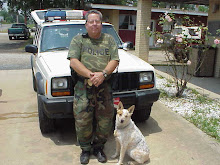TRAINS
(PCP)
Large, loud behemoths, roaring through the mountains and clattering over steele trestles, leaving long black plumes of billowing black smoke hanging in the air that they had just shattered with their loud and piercing whistles.
The clatter of the large steel wheels as they passed over road crossings, absolutely shook the ground for a considerable distance. The deep resonant roar held the attention of everyone, to include livestock in fields or horses tied at a hitching post.
You could set your watch by them, being on time was a matter of pride and local merchants relied upon it. Whether it was mail for the post office, movies for the theater, or machinery for the sawmill, it arrived by rail. If you had a watch, or were good at telling the time by the sun, you could tell by the way the engineer blew the whistle for the various crossings, where the engine was and maybe who the engineer was.
With leathery bronzed skin, from peering down the tracks in all kinds of weather, the engineer commanded attention. Perched high in the engine, at the controls, striped cap shading his eyes, peering into the distance for the least sign of trouble ahead, he always had time to wave at those he passed.
To those onlookers that marveled at this spectacle, it was a thing of awe. To the business owners of the community’s it passed through, it was the very life’s blood of the economy. To the locals it was fresh bananas from exotic southern nations and fabrics from Eastern mills for school clothing, it was fencing supplies and hardware for farms, it brought college students and soldiers back home.
The arrival of the railroad elevated the quality of life in the Ouachitas. Towns and commerce followed the route of the rails. When because of engineering concerns the rails bypassed the county seat, the county seat moved to the rails.
Years pass and paved highways began to crisscross Polk County. Local economy is now more driven by highway transportation for many items, but most natural resources still travel the rails.
Railroad crews and contractors have been gradually working their way south along the tracks in the recent few weeks. The long lines of rail repair cars that travel up and down the tracks are replacing ties, repairing the roadway crossings and leveling the railbed. The first sign to locals that a different type of repair of the crossings was underway was when trucks delivered crushed rock and coarse asphalt to each crossing.
The railroad crossings have been modified in a new and different way this time. The railbed is leveled from the bottom up with a machine that claws down deep to level the tracks after the ties have been replaced. Asphalt base is then placed down in a temporary crossing. Finally large long rubber grooves are placed by the rails that facilitate a much smoother crossing for automobiles. A final asphalt layer is used for the finish layer, making these the smoothest crossings ever.
With the advent of electromotive diesel engines and ribbon rail without bolted together joints, the trains are not quite the same, they are quieter, smoother, and more environmentally friendly.
The railroad has once again improved the quality of life in the Ouachitas.
As you enjoy those new railroad crossings, take a minute to remember the colorful history and relationship between the county and the railroad.
Friday, September 26, 2008
Subscribe to:
Post Comments (Atom)

No comments:
Post a Comment